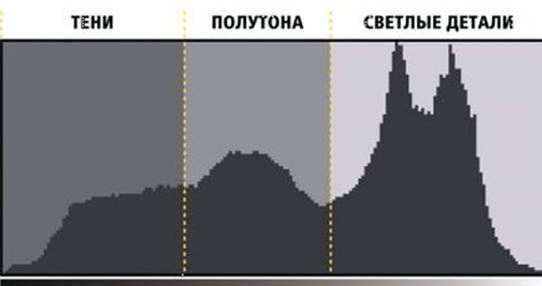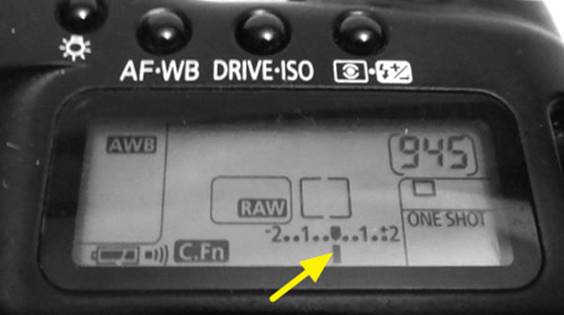How to use the exposure in the camera
In order to learn how to make clear, eye-catching beauty with a camera with semi-automatic or manual shooting settings, you need to understand the basics of the photography process. The main concern of a good photographer is to choose the right exposure, otherwise beautiful shots will not work. Three interconnected exposure parameters in the hands of a skilled photographer turn into effective artistic tools.
Content
What is the exposure
The concept of exposure in a camera means the amount of light falling on a sensitive element (matrix) at the time of shooting. The clarity and brightness of the objects in the photograph depend on the correctly set values of the shooting parameters.
If there is not enough light on the matrix, the photo is darkened. In this case, they say that the exposure was chosen small. With a large amount of luminous flux, on the contrary, the image is very light. Then they talk about the choice of unreasonably great value. In both cases, the images are missing halftones, the quality of such photographs suffers.
Modern digital photographic equipment is equipped with a number of automatic modes and manual exposure adjustment. For novice users, it is important to understand the principles of manual adjustment, learn how to use a histogram, which makes it clear how evenly the light is distributed over the frame.
Interconnection of parameters
The shooting parameters in the camera are adjusted in three interdependent directions: aperture, shutter speed and sensitivity (ISO). It is important for a photographer to understand the interrelation of these values displayed on a camera, their influence on each other.
- Diaphragm is a mechanically adjustable "pupil" of the lens and is responsible for the intensity of the light supply. Through a different value of this parameter, you can change the intensity of the light flux falling on the matrix of the camera.
- Exposure characterizes the time interval of the effect of light on the matrix with the shutter open. The picture is brighter with longer shutter speeds.
- ISO value determines the degree of susceptibility of the elements of the matrix to the light.
Graphically, the relationship of these parameters is represented as a triangle.

In most models of modern digital cameras there are program exposure mode. When the automatically exposed exposure doesn’t satisfy (the frame is slightly dimmed at the user's gaze or, on the contrary, a little lighter), exposure compensation can be made. The histogram of the frame will help you to understand in which direction to correct.
Using the histogram in the evaluation of exposure
A histogram is a graphical representation of the dynamic range of light distribution over a frame. The graph reflects the levels of brightness and contrast of the image.

The horizontal axis of the graph reflects smooth tonal transitions from dark to light details.The vertical represents the quantitative characteristics of a particular tone. The histogram is read from left to right. The size and shape of the graph determines the contrast of the frame, the correct choice of exposure.

We give examples of graphs with the absence of semitones.
- Bar graph with lots of dark pixels on the left. Peaks of light tones on the right are missing. Graph reflects frame underexposure.

- The histogram is concentrated on the right in the area of bright pixels. There are no dark tones peaks on the left. Graph reflects frame overexposure.

Exposure is performed by removing the slider to 0.

Important! The mechanism for the implementation of this process in different models may differ, so it is desirable to study the instructions for a particular model.
Exposure scale and photo bracketing
To effectively use the SLR camera, it is important to understand such concepts as scale and exposure bracketing. The exposure scale is used in all models of photographic equipment with support for semi-automatic and manual adjustment of parametersshooting. This is the same slider showing the level of customization. The optimal level is considered zero value.

Save time on the selection of the optimal parameters of the shooting, you can use the reception bracketing.
The essence of the method consists in sequential shooting of several frames (from 3 and more) with different values of exposure. A series of pictures with zero exposure correction and symmetric values on the scale in the positive and negative directions are taken. More successful shots photographer can choose later.
Reception is relevant when shooting in low light conditions, when it is difficult to choose the optimal shooting parameters. Professional cameras, premium class reflex cameras are usually equipped with manual exposure bracketing functionality. Budget class digital technology has built-in AEB mode, allowing you to make a series of shots with a given correction step with one click on the shutter start button.
Exposure metering mechanism
Metering is carried out on one of three algorithms.
- Integral, it is the matrix measurement of parameters is performed over the entire matrix, and the data are averaged. The aperture values and shutter speeds set by the program are arithmetic average parameters.
- Spot metering produced in a small area in the center of the frame, and the illumination at the edges of the matrix does not affect the calculated aperture and shutter speed.
- Weighted average determines the exposure parameters on a weighted basis: the central and nearby points to the center of the frame have the greatest influence on the calculation.

For each mechanism for measuring the magnitude of the exposure is used its own icon.
To manually set the exposure pair, it is important to understand the EV values in the camera. Far from everyone knows what the concept is behind the abbreviation EV. The abbreviation stands for “Exposure Value”, which is translated into Russian "Exposure value». The concept of “Exposure Value” defines the illumination by which the exposure is set. For each value of the sensitivity of the matrix, a different value of EV is recommended (the value depends on the shooting conditions).In the instructions and subject literature, you can find a table of recommended values of EV. Having understood the relationship of exposure parameters, the owner of a digital camera will be able to creatively approach the process of shooting.

/rating_off.png)











